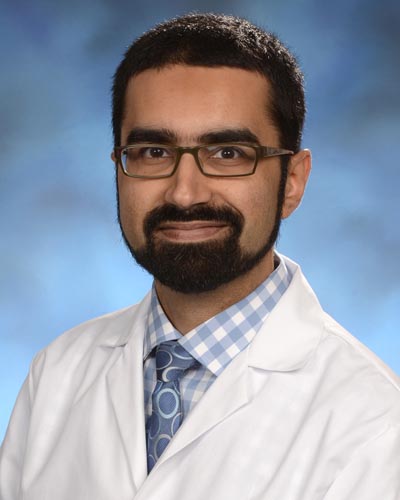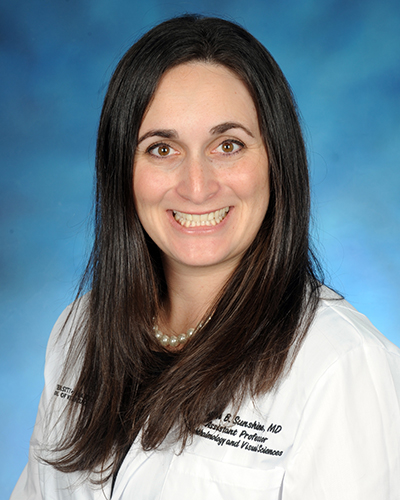Partner Content
Of all the five senses, few people would disagree that your eyesight is the most important; but problems with the cornea can threaten that. The severity of cornea conditions varies, from uncomfortable dry eyes and inflammation to corneal dystrophies that cause cloudy vision.
We talked with physicians from University of Maryland Eye Associates, to find out more about the symptoms, risk factors, and latest treatments.
What important role does the cornea play within the eye and your overall vision?
Dr. Jeng: Although all parts of the eye are important contributors to vision, it can easily be argued that the cornea is the “gatekeeper.” If the cornea is not clear, smooth, and properly shaped, vision will be affected because images will not be able to be transmitted into the eye correctly. In a sense, the cornea is the “window” into the eye.
Tell us about the most common cornea conditions you see in your practice.
Dr. Jeng: Many conditions can affect the cornea, from dry eyes to genetic conditions to traumatic situations. While dry eyes is the most common cornea-related condition that we see, my colleagues and I also care for many patients with less common diagnoses such as Fuchs dystrophy, keratoconus (misshapen cornea), and corneal infections, all of which can require corneal procedures, such as transplantation, in order to restore vision.
How would you know that you were developing corneal problems?
Dr. Sunshine: Many patients think if you are experiencing tearing, then your eyes are not dry. This is not the case; in fact, increased tearing is often your body’s response to dry eye. If you notice you have increased tearing with a burning sensation or occasionally find that your vision is blurry, then I would recommend that you be evaluated.
How do you diagnose these problems?
Dr. Jeng: Corneal problems need to be diagnosed in the office. A slit lamp examination, along with special stains and office testing, can usually help us diagnose dry eyes. For a suspected corneal infection, culturing of the cornea can be done to determine the organism. More sophisticated imaging equipment is sometimes needed to diagnose conditions such as keratoconus, or to follow conditions such as Fuchs to determine the best time for intervention.
How are ophthalmologists at the University of Maryland treating these conditions?
Dr. Jeng: The field of cornea has changed dramatically over the past 20 years or so, as advancements in diagnostic technologies and surgical techniques have rapidly entered our field. My colleagues and I at the University of Maryland Eye Associates have the latest technology and equipment to diagnose and treat all types of corneal conditions. We specialize in everything from the routine dry eyes to very unusual and rare conditions, including tumors.
What is your best tip for optimal healing?
Dr. Munir: Healing from a corneal injury or surgery is often fairly rapid. The best way to promote proper healing is to ensure timely use of prescribed eye drops, and careful follow-up with your corneal surgeon. Your surgeon will often indicate how long to avoid water in the eye, or lifting heavy objects to avoid strain around the eye, which can promote a safer recovery.
What is a common myth you hear in your practice?
Dr. Munir: A common myth is that many corneal diseases are incurable or blinding. I am happy to tell many of my patients, that options often exist, whether medical or surgical, to fix a variety of corneal problems. Corneal transplant surgery has really advanced tremendously in recent years, such that the risk of rejection is often low, the use of pills or other medications for immunosuppression other than drops to prevent rejection is rare, and the visual results can often be excellent.
Dr. Sunshine: I hear that patients feel that their impaired vision is because of a normal aging process. Your vision does not deteriorate because of aging (or being tired). These symptoms can be signs of changes within your eye especially in your cornea or lens. As Dr. Munir said, many of these changes can easily be treated with medical or surgical therapies.
How has the pandemic affected patients’ eye health?
Dr. Sunshine: During the first wave of the pandemic, many patients were scared to come in for their regularly scheduled eye care. Sadly, we saw much more vision-threatening disease that could have been prevented with regular care. Therefore, I cannot stress enough how important it is to get regular eye care, even during the pandemic.
How can patients protect their eyesight in general?
Dr. Jeng: By wearing sunglasses that block UV light and proper eye protection, such as goggles when working in situations where objects may fly into the eye–during home construction, yard work, and certainly at industrial construction sites. While no one wants a nail in the eye (which does happen), even small metallic particles coming from working underneath a car can cause serious eye injury.
Dr. Sunshine: Never sleep or swim in your contact lenses, wash your hands prior to touching your eyes in order to prevent corneal infections, and only purchase artificial tears that have no preservatives as preservatives can irritate your eye. Lastly, adopt a good regimen for eyelid hygiene that consists of warm compresses for 5 minutes followed by eyelid scrubs. This will both make your eyes feel better and help with overall corneal health.
What is your patient care philosophy?
Dr. Munir: My patient care philosophy centers around patient education and understanding. I feel the best way to promote healing and corneal health is with an informed patient, who is fully aware of their diagnosis and the steps needed to attain recovery. I like to promote active discussion and answering all questions about prognosis and care during my visits with patients.
Dr. Sunshine: The most important and gratifying part of my practice is listening to my patients, as the information they share guides me to their diagnosis and allows me to tailor their treatment regimen to their unique lifestyle. Working together with my patients helps me focus my clinical care and my research on what my patients need most, allowing me to help to restore vision to even more people.
Meet the Doctors:





